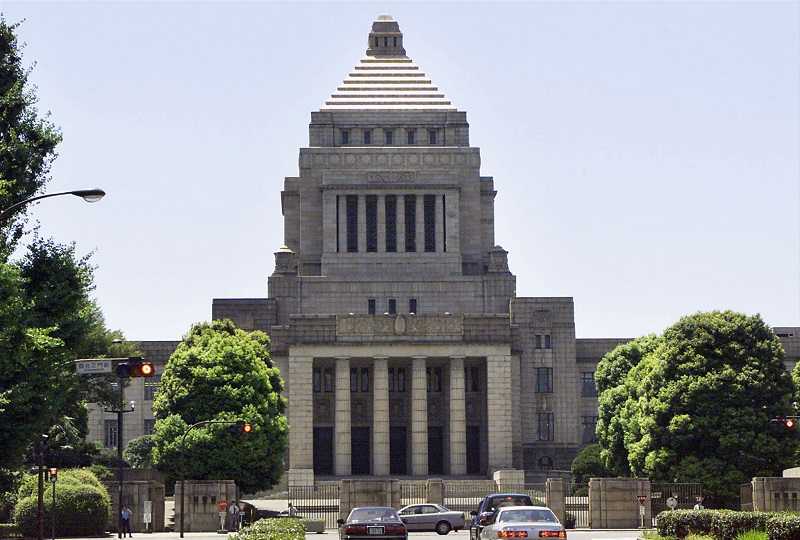
An exterior view of the Japanese Diet building in Tokyo.
15:47 JST, April 10, 2021
A target to cut greenhouse gas emissions by 45% by fiscal 2030 based on 2013 levels has been discussed in the government. The current target for 2030 is 26%.
The government wants to speed up coordination so that a decision can be made by the end of this month but there is a significant gulf in the opinions of the Environment Ministry and the Economy, Trade and Industry Ministry.
The government regards 2030 as an interim goal, having already set a net-zero emissions target for 2050.
The government wants to present the new target at the Suga-Biden summit meeting on April 16 and a U.S.-hosted climate change summit meeting to be held on April 22 and 23.
“We will announce an ambitious goal for fiscal 2030,” Prime Minister Yoshihide Suga said in his policy speech in January. He instructed Economy, Trade and Industry Minister Hiroshi Kajiyama and Environment Minister Shinjiro Koizumi to formulate the target.
On April 6, Suga received a proposal from Komeito Secretary General Keiichi Ishii, calling for the emissions target to be improved. “We will raise [the figure] and set the target,” the prime minister said.
Koizumi is determined to set ambitious targets, in line with the prime minister’s goals. “Unless we do what we can with determination, we will not be able to achieve [net-zero emissions],” Koizumi said at a press conference on Friday. According to sources, Koizumi wants the 2030 goal to be 50%.
A 2030 target would be of interest at Suga’s upcoming summit with U.S. President Joe Biden, who has indicated that climate change is one of his top priorities.
Suga may set a target of 45% or higher depending on Biden’s response at the summit, according to a senior official at the Cabinet Secretariat.
However, Kajiyama said on Friday, “We have to present something feasible.”
The nation’s energy mix will be a key issue. To raise the target, it will be necessary to expand the use of renewable energy — which is easily affected by weather conditions — and restart nuclear power plants, among other measures.
More than 70% of Japan’s electricity is currently generated by thermal power, which emits a lot of carbon dioxide. If renewable energy sources are increased, power generation costs might increase, and these costs would likely lead to higher bills for consumers.
The economy ministry is in the process of reviewing the composition of electric power sources for fiscal 2030 and a report will be compiled by around summer. But the ministry is wary that discussions may be hampered if the emissions target is presented before the ministry’s plan.
"Politics" POPULAR ARTICLE
-

Japan to Support Central Asian Logistics Route That Bypasses Russia, Plan to Be Part of Upcoming Summit in Tokyo
-

Japan to Tighten Screening of Foreigners’ Residential Status by Providing Information of Nonpayment of Taxes
-

Takaichi Cabinet Approval Holds at 72% as Voters Back Aggressive Fiscal Stimulus, Child Benefits
-

Chinese, Russian Bombers Flew Unusual Path by Heading Toward Tokyo; Move Likely Meant to Intimidate Japan
-

Takaichi Meets Many World Leaders at G20 Debut in Johannesburg; Speaks with Heads of Countries Including Italy, U.K., Germany, India
JN ACCESS RANKING
-

Keidanren Chairman Yoshinobu Tsutsui Visits Kashiwazaki-Kariwa Nuclear Power Plant; Inspects New Emergency Safety System
-

Imports of Rare Earths from China Facing Delays, May Be Caused by Deterioration of Japan-China Relations
-

University of Tokyo Professor Discusses Japanese Economic Security in Interview Ahead of Forum
-

Japan Pulls out of Vietnam Nuclear Project, Complicating Hanoi’s Power Plans
-

Govt Aims to Expand NISA Program Lineup, Abolish Age Restriction

























